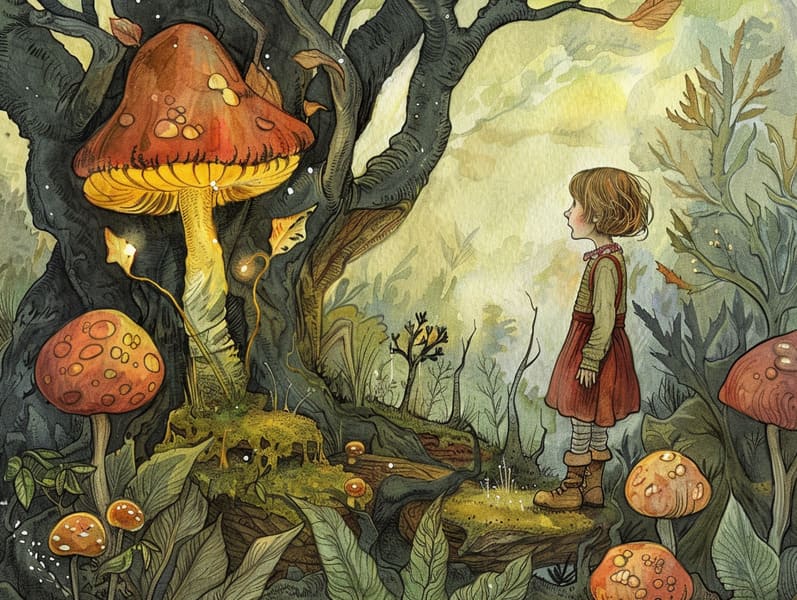The Rise of Old Fairy Tales and Its Endless Captivation.
The Rise of Old Fairy Tales and Its Endless Captivation.
Blog Article

Legendary fairy tales have long histories. These stories have been spoken from one generation to the next far before they were ever transcribed. They came from a variety of cultures, including African traditions. They were initially disseminated among mature audiences, often carrying themes and messages mirroring the societal norms and beliefs of the time.
The famous Grimm duo, Jacob and Wilhelm (the Grimm brothers), were among the first to compile many of these beloved stories. Their published works, "Grimm's Children's Stories," included narratives like "Ashenputtel," "Little Brother and Little Sister," and "Snow White," which have since become essentials in the world of beloved fairy tales. Similarly, H. C. Andersen's whimsical fairy tales, such as "The Little Mermaid," and "The Ugly Duckling," have stolen hearts worldwide, establishing their place in the pantheon of beloved fairy tales.
Even though they are old, traditional fairy tales remain as impactful as ever, especially as nighttime stories for kids. These enchanting tales are now available in multiple formats, including vibrantly illustrated books, charming animations, and internet fairy tales.
Their ongoing significance can be credited to several enchanting factors:
Important Morals: Old fairy tales often impart important moral lessons. Fairy tales like "The Story of the Boy Who Cried Wolf" teach the importance of being truthful, while "The Story of the Tortoise and the Hare" demonstrate the merits of persistence and unpretentiousness. These narratives offer children clear distinctions between right and wrong, developing their moral compass in a tender yet profound way.
Compassion and Knowledge: Classic fairy tales frequently involve heroines facing challenges and problems, inciting young listeners to understand with their struggles and applaud their triumphs. For instance, "The Story of Beauty and the Beast" demonstrates the merit of looking past the exterior to perceive the true essence of a soul, advancing perception and understanding.
Cultural Recognition: Many fairy tales are rooted in the cultural contexts from which they emerged. Delving into these stories can provide enlightening views into different historical contexts, strengthening a sense of cultural respect and perception.
Creativity and Imagination: The supernatural elements in traditional fairy tales—magical spells—enliven children’s fantasy worlds. These stories carry readers to magical realms, engendering fantasy dreams and a sense of awe that lasts a lifetime.
Timeless fairy tales are not only bewitching but also instructive. They work as charming tools in nurturing various intellectual and emotional capacities in the young. When old fairy tales are spoken out loud, they advance communication skills by showing new language and detailed sentence structures. This practice also enhances listening abilities and mindfulness, as young ones stay focused, looking forward to see what happens next.
Furthermore, deliberating the themes and characters of traditional fairy tales can develop analytical skills and thought processes. Children are educated to identify patterns, predict happenings, and grasp cause and effect. These discussions also further the young voice their thoughts and feelings, strengthening their emotional intelligence.
In today’s electronic age, the presence of digital storybooks has made these stories more acquirable than ever. Web-based platforms and software present huge assortments of famous fairy tales that can be perused or listened through anytime, anywhere. Fairy tales told out loud are particularly common, extending an captivating way for children to delight in these charming stories. Spoken stories and voiced videos take characters and settings to life, often supplemented by fantastical audio effects and instrumentals that augment the narrative adventure.
The timeless fascination of classic fairy tales lies in their ability to alter to today's world while keeping hold of their fundamental ideas. Contemporary retellings of these fairy tales often spotlight more multicultural protagonists and modern settings, making them relatable to today’s audience. However, the basic principles of bravery, kindheartedness, and integrity remain unchanged, continuing to strike a chord with children of all ages.
Traditional fairy tales also offer a sense of popular fairy tales with morals serenity and recognition. They impart a coherent narrative with a obvious beginning, middle, and end, often drawing to a close with the ending of conflicts and the triumph of honesty over deceit. This foreseeability can be encouraging for kids, sharing a sense of unwaveringness in an shifting world.
Old fairy tales continue to captivate and train new generations, maintaining their fascination and pertinence in modern society. As kids' bedtime tales, they confer upon a perfect blend of enchantment and education, facilitating moral values, empathy, and creativity. The abundance of free fairy tales online and the commonness of fairy tales read out loud assure that these timeless tales remain available to new generations.
By upholding and sharing these narratives, we continue to pay tribute to the rich tapestry of human imagination and cultural heritage. Whether you are browsing a artistically illustrated book, perusing a internet library, or hearing an narrated book, the enchantment of bedtime fairy tales is always within reach. These stories teach us of the enduring power of storytelling and its ability to draw us together across centuries and lands.
Whether you are reading a colorful picture book, experiencing a electronic library, or hearing an audio story, the majesty of classic fairy tales is always within reach.
These stories convey of the everlasting force of narratives and its ability to gather us across epochs and places, casting a charm that fascinates and enlightens alike.